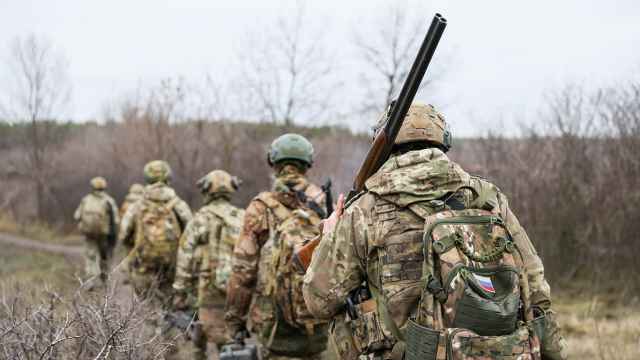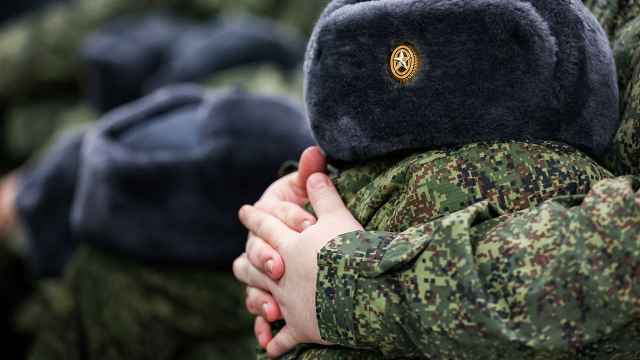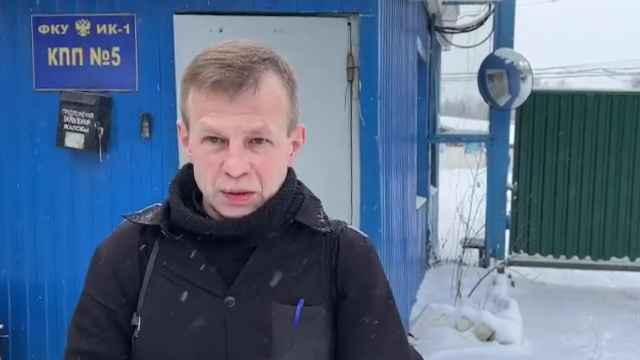Russia remembered two unlikely national heroes Thursday — a pair of skinny street mutts who moved the Soviet Union into the lead of the space race when they became the first living creatures to circle Earth and come back alive.
The Aug. 19, 1960, mission by Belka and Strelka was a key step in preparations for the flight of Yury Gagarin, who became the first human in space about a year later.
It showcased the Soviet lead in space exploration and turned the two dogs into global celebrities. Celebrations of the mission's 50th anniversary topped national newscasts Thursday.
By 1960, Soviet space engineers had designed a returnable spacecraft capable of carrying a human into orbit, but they needed to run an extensive program of animal tests first, and many of the dogs died during the trials.
Only stray mutts were picked for such flights — doctors believed that they were able to adapt quicker to harsh conditions — and they were all very small so they could fit into the tiny capsules.
Laika became the first dog to orbit Earth in a non-returnable capsule but died of overheating after her 1957 launch. Two other dogs died in a July 1960 launch when their rocket exploded seconds after blastoff.
Boris Chertok, a top engineer in the Soviet space program at the time, recalled the sense of relief space engineers felt when they heard Belka and Strelka barking in orbit and realized that they were in good shape.
"They aren't howling, they are barking — that means they will return," Chertok quoted a colleague as saying.
Belka (Squirrel) and Strelka (Little Arrow) were accompanied by mice, rats, flies, and some plants and fungi. The spacecraft landed successfully a day after making 17 orbits in more than 25 hours.
"These dogs acted like real pros," Vladimir Tsvetov, an engineer who took part in the mission, said on Rossia state television.
Soviet official reports claimed that the dogs felt well throughout the flight, but a participant in the program recalled later that it was not completely trouble-free. Dr. Vladimir Yazdovsky, who prepared the experiment, said Belka was very nervous during the flight.
"She was very restless, tossing about and trying to get rid of the belts fixing her and barking," Yazdovsky wrote in his book chronicling the story of Soviet space medicine. However, post-flight medical checkups showed that both dogs were in fine condition without any adverse effects from the flight.
Strelka later had six puppies, one of which, Pushinka (Fluffy), was sent by Soviet leader Nikita Khrushchev to U.S. President John F. Kennedy's daughter Caroline.
Earlier this year, the dogs' story came to the screen in Russia's first 3-D computer-animated movie, "Belka and Strelka: Star Dogs."
A Message from The Moscow Times:
Dear readers,
We are facing unprecedented challenges. Russia's Prosecutor General's Office has designated The Moscow Times as an "undesirable" organization, criminalizing our work and putting our staff at risk of prosecution. This follows our earlier unjust labeling as a "foreign agent."
These actions are direct attempts to silence independent journalism in Russia. The authorities claim our work "discredits the decisions of the Russian leadership." We see things differently: we strive to provide accurate, unbiased reporting on Russia.
We, the journalists of The Moscow Times, refuse to be silenced. But to continue our work, we need your help.
Your support, no matter how small, makes a world of difference. If you can, please support us monthly starting from just $2. It's quick to set up, and every contribution makes a significant impact.
By supporting The Moscow Times, you're defending open, independent journalism in the face of repression. Thank you for standing with us.
Remind me later.





